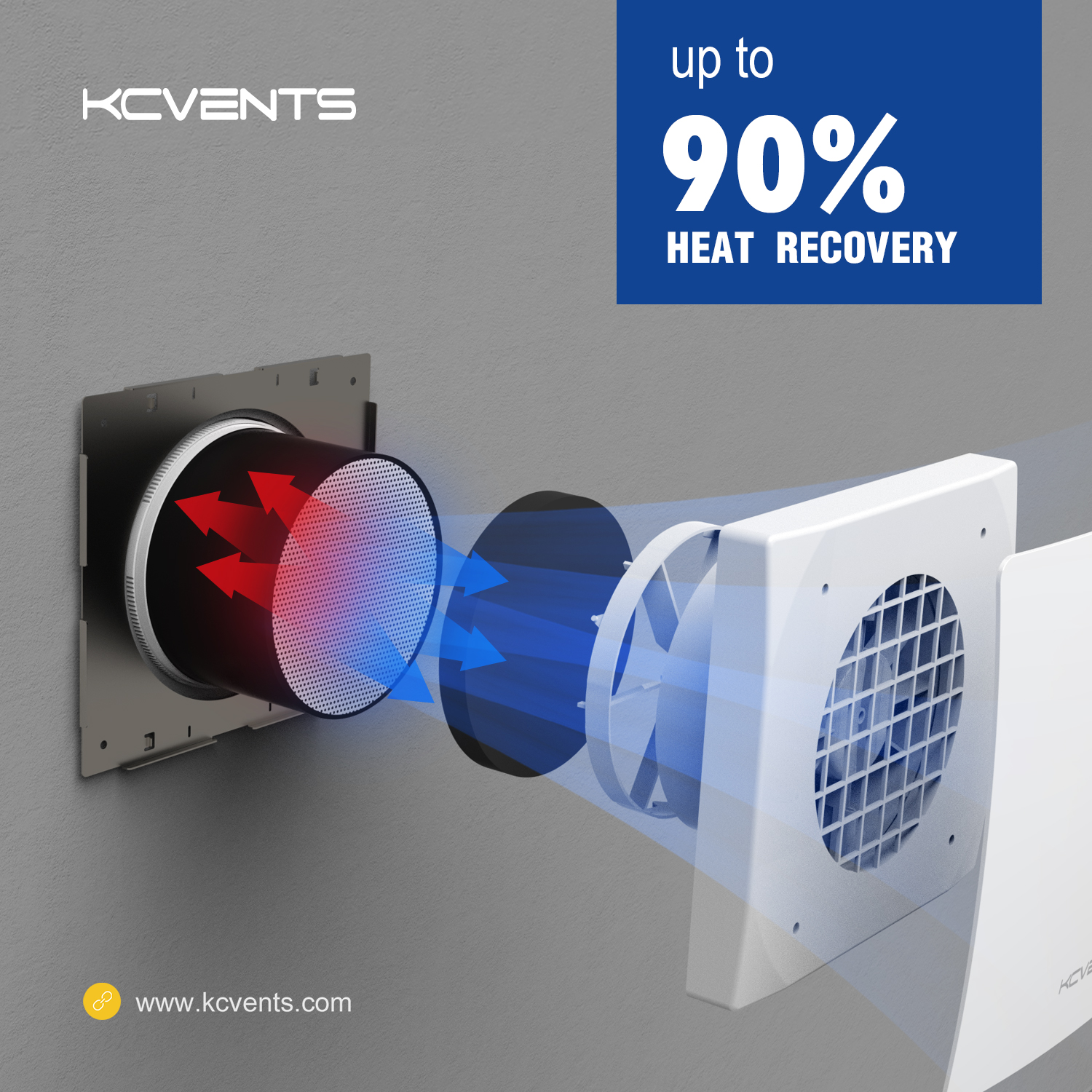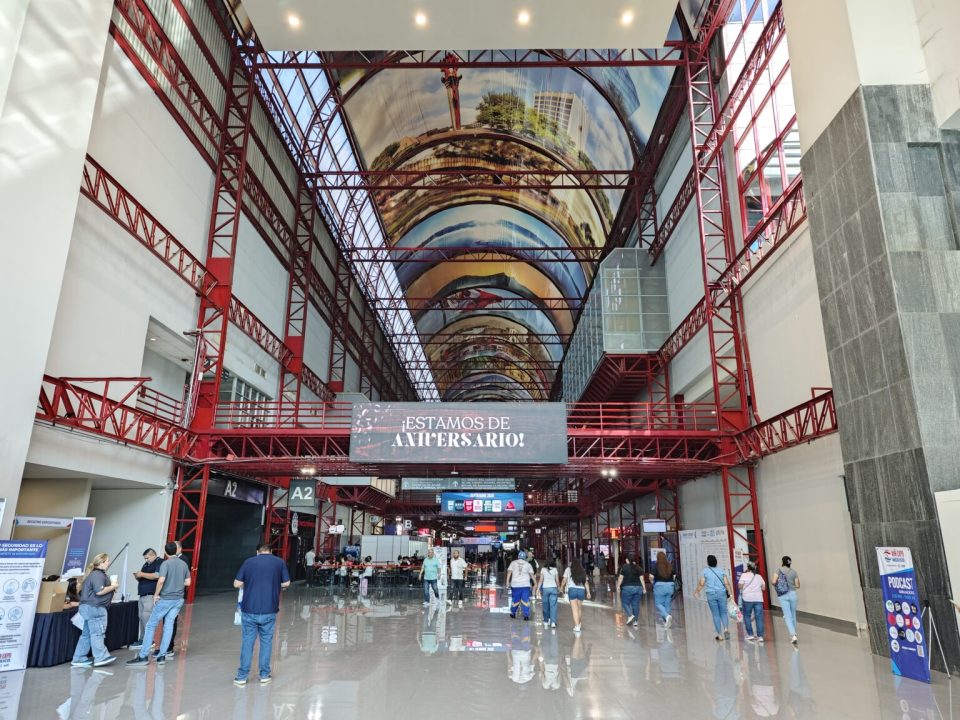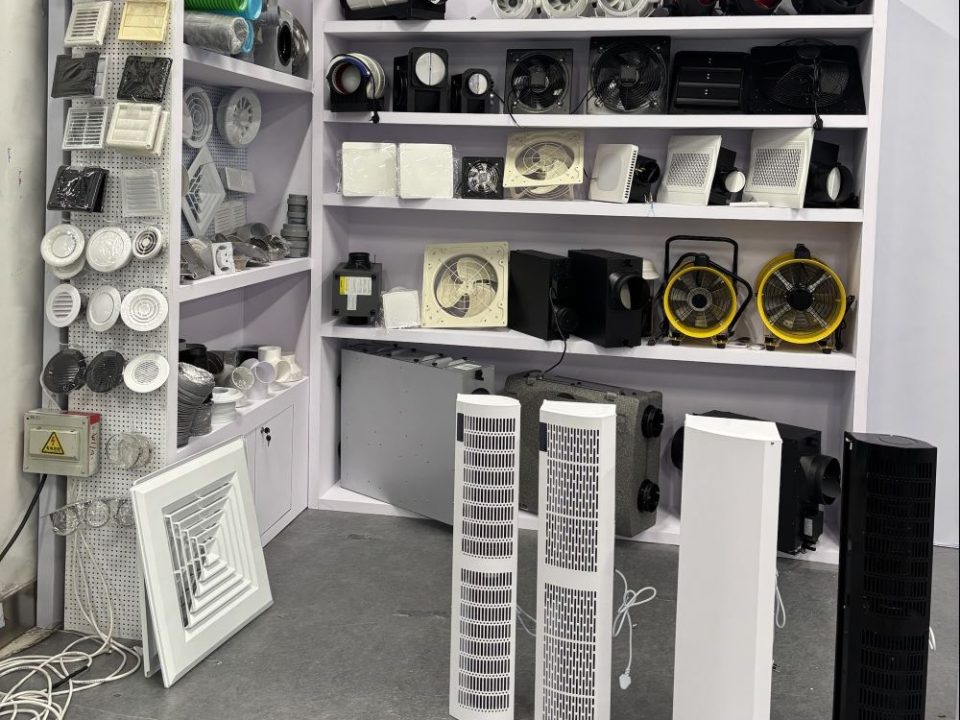In today’s energy-conscious world, maintaining indoor air quality while minimizing energy consumption is a growing concern. The VT501 Single Room Heat Recovery Ventilation (HRV) system offers a practical solution to this dilemma. By efficiently recovering heat from exhaust air, the VT501 provides fresh, pre-warmed air, making it an ideal choice for colder climates and energy-conscious homes. But just how much heat can you expect from an HRV system like the VT501 when the temperatures outside are freezing?
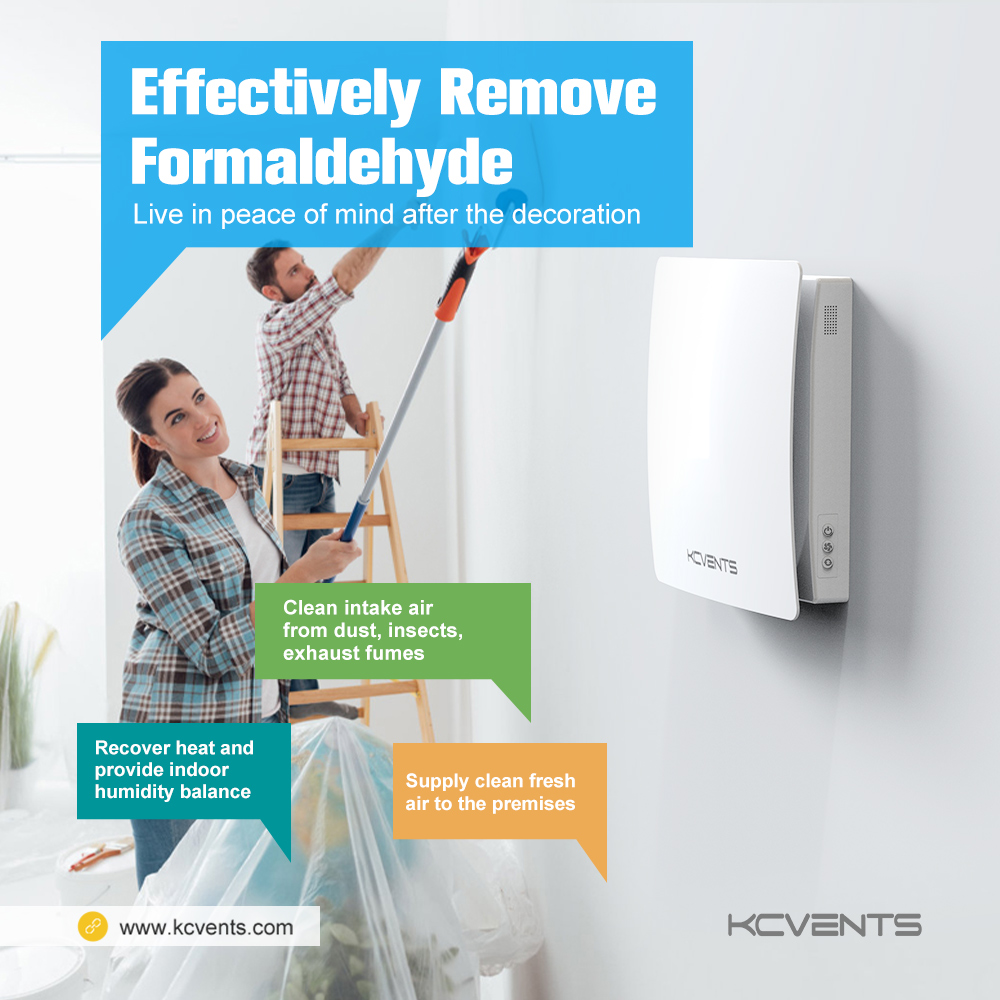
How Does the VT501 HRV Work?
The VT501 is designed to continuously exchange indoor and outdoor air, ensuring that your home has a constant supply of fresh air without losing the heat energy from the stale, outgoing air. Here’s how the system works:
- Exhausting Stale Air: The unit pulls stale, humid air out of the room, typically from areas like kitchens and bathrooms.
- Recovering Heat: As the air leaves the building, it passes through a heat exchanger that absorbs the warmth.
- Warming Fresh Air: Simultaneously, the system brings in fresh outdoor air, passing it through the same heat exchanger. This fresh air absorbs the stored warmth before being delivered into your home.
The VT501 is highly efficient, with a heat recovery rate of up to 90%, making it an energy-saving solution.
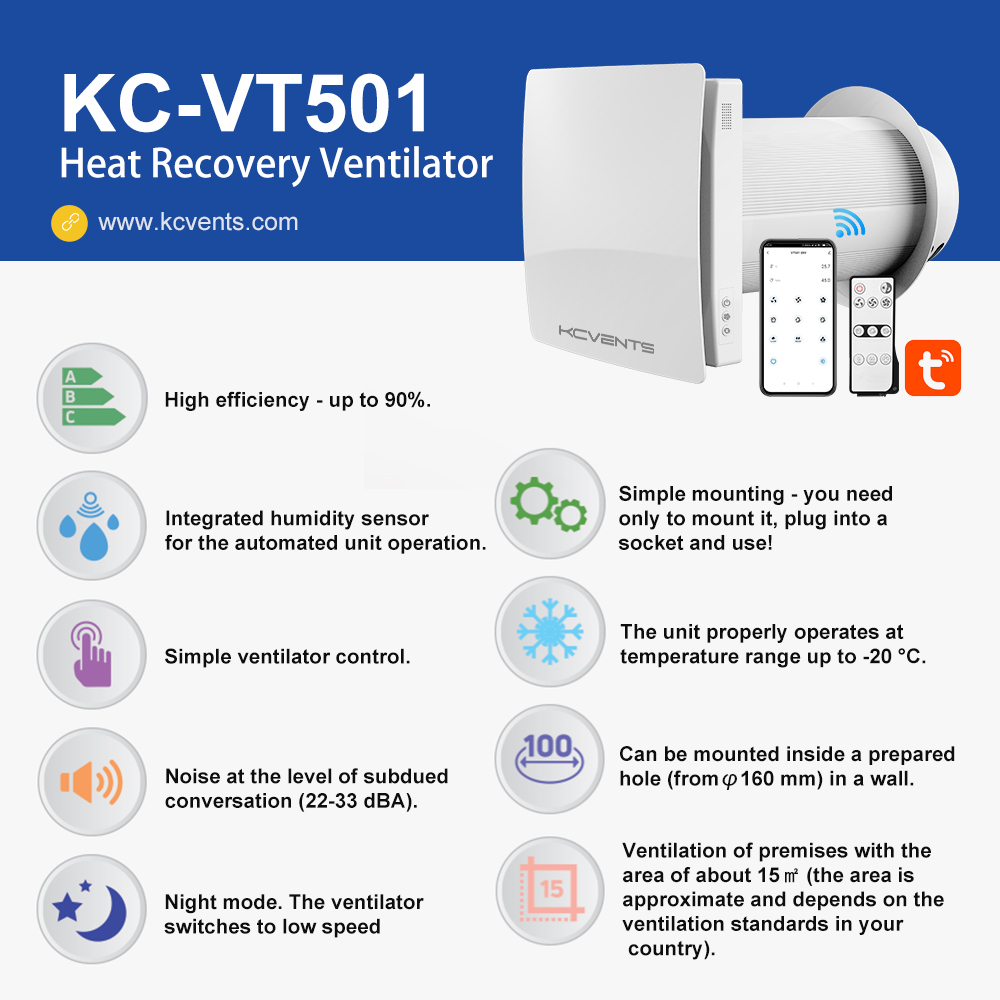
Real-World Performance: What Happens When It’s -5°C Outside?
One of the most common questions about HRV systems is: how much heat can they retain, especially when it’s bitterly cold outside? Let’s explore how the VT501 performs in real-world conditions.
Imagine a scenario where the outside temperature is -5°C, and the indoor temperature is set at a comfortable 20°C. The heat exchanger works by transferring the heat from the outgoing warm air to the incoming cold air. The VT501 has an impressive heat recovery efficiency of up to 90%.
Example Calculation:
- Indoor temperature: 20°C
- Outdoor temperature: -5°C
- Temperature differential: 25°C
With a 90% heat recovery efficiency, the incoming air is warmed by 90% of the temperature differential (25°C). So, the incoming air can be heated by about 22.5°C.
This means that the fresh air entering the room would be at around 17.5°C, even though it’s -5°C outside.

Benefits of the VT501 in Colder Climates
- Energy Savings: By recovering up to 90% of the heat from the outgoing air, the VT501 significantly reduces the energy needed to heat the incoming fresh air. This results in lower heating bills, especially during the winter months.
- Enhanced Comfort: Unlike traditional ventilation systems that bring in cold, outdoor air, the VT501 ensures that the fresh air is pre-warmed, providing a more comfortable indoor environment.
- Improved Air Quality: The VT501 continuously supplies your home with fresh air while removing stale, polluted indoor air. This improves overall indoor air quality without sacrificing warmth.
- Eco-Friendly: By reducing energy consumption, the VT501 helps minimize your carbon footprint, making it an environmentally responsible choice.
Additional Heating Options
While the VT501 excels at recovering heat from outgoing air, it does not function as a heater. If you require more warmth than the HRV can provide, especially in extremely cold conditions, consider integrating a post-heating module or a separate heating system to further increase the indoor air temperature.
